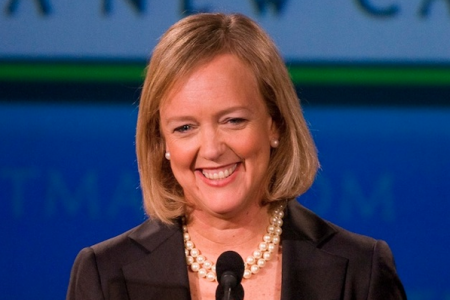 Stung by its failures in the mobile computing business, Hewlett-Packard said it would cut 27,000 jobs today. That amounts to 8 percent of its 325,000-person work force.
Stung by its failures in the mobile computing business, Hewlett-Packard said it would cut 27,000 jobs today. That amounts to 8 percent of its 325,000-person work force.
The cuts will be implemented by October 2014, giving employees affected considerable time to find new jobs. Dubbed a “multi-year restructuring,” the move is aimed at making the company more innovative and cost efficient. It will include an early retirement program and a one-time charge of $1.8 billion.
“We are making progress in our multi-year effort to make HP simpler, more efficient and better for customers, employees, and shareholders,” said Meg Whitman, HP chief executive. “This quarter we exceeded our previously provided outlook and are executing against our strategy, but we still have a lot of work to do.”
Regarding the layoffs, Whitman said, “These initiatives build upon our recent organizational realignment, and will further streamline our operations, improve our processes, and remove complexity from our business. While some of these actions are difficult because they involve the loss of jobs, they are necessary to improve execution and to fund the long term health of the company. We are setting HP on a path to extend our global leadership and deliver the greatest value to customers and shareholders.”
HP will continue to invest in core research and development, enterprise servers, software, and services. This year, HP expects to shed about 8,000 employees.

The company made the announcement as it released a solid earnings report for the second fiscal quarter ended April 30. The layoffs are a part of chief executive Meg Whitman’s strategy to turn the Silicon Valley giant around.
HP also turned out better-than-expected earnings. The company reported non-GAAP earnings per share of 98 cents, compared to its own previous estimate of 88 cents to 91 cents a share. GAAP earnings per share were 80 cents.
Second-quarter revenue was $30.7 billion, down 3 percent from a year ago.
Analysts surveyed by Thomson Reuters expected HP to report revenue of $29.9 billion and non-GAAP earnings of 91 cents a share, compared to sales of $31.6 billion and earnings of $1.24 a share in the same period last year.
Investors will be focusing their attention on HP’s PC business to see whether the notebook weakness identified by Dell has reached Palo Alto.
HP may not be as bad off as Yahoo, the sick man of the valley, but it hasn’t kept up with the times. Its rival, Apple, has taken over HP’s old properties in Cupertino and is building a futuristic, spaceship-like headquarters on top of them.
In the first fiscal quarter, HP had revenue of $30 billion and GAAP net income of 73 cents a share, above its previous outlook of 61 cents a share. The company closed the quarter with $8.7 billion in cash.
For the outlook, HP expects 10 percent to 12 percent margins for the services business for the rest of the fiscal year. For the third fiscal quarter, HP expects 94 cents to 97 cents a share earnings. Overall, for the fiscal year, HP expects better earnings than it previously did.
Here’s the details on HP’s divisional sales:
Personal Systems Group(PSG) revenue was flat year over year with a
5.5% operating margin. Commercial revenue increased 3%, and Consumer
revenue declined 4% while Workstations revenue was down 1% year over
year. Desktop units were up 5%, notebook units were down 6% and total
units were down 1%.
— Services revenue declined 1% year over year with an 11.3% operating
margin. Technology Services revenue was flat year over year,
Application and Business Services revenue grew 1% and IT Outsourcing
revenue declined 3% year over year.
— Imaging and Printing Group (IPG) revenue declined 10% year over year
with a 13.2% operating margin. Commercial hardware revenue was down 4%
year over year with commercial printer units down 7%. Consumer
hardware revenue was down 15% year over year with a 13% decline in
printer units.
— Enterprise Servers, Storage and Networking (ESSN) revenue declined 6%
year over year with an 11.2% operating margin. Networking revenue was
up 2%, Industry Standard Servers revenue was down 6%, Business
Critical Systems revenue was down 23%, and Storage revenue was up 1%
year over year.
— HP Financial Services revenue grew 9% year over year driven by a 4%
increase in net portfolio assets and a 5% increase in financing
volume. The business delivered a 9.9% operating margin.
— Software revenue grew 22% year over year with a 17.7% operating
margin, including the results of Autonomy. Software revenue was driven
by 7% license growth, 17% support growth, and 72% growth in services.
Autonomy saw a significant decline in license revenue.

